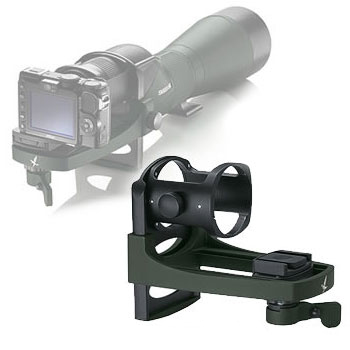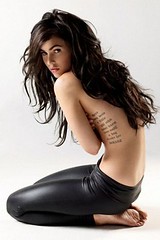
Swarovski 80HD & UCA Adapter
It's increasingly difficult for me to recommend a particular camera model for digiscoping. Gone are the days of 'digiscoping simplicity' with with Nikon's Coolpix point & shoot digital cameras like the 990, 995, 4500, 8400, P5100, and P6000. The 900 series (including the 4500) had an internal zoom lens with a convenient 28mm filter thread where a DCA style digiscoping adapter could connect directly to the camera. The 8400, P5100, and P6000 had inexpensive UR-Enn accessory adapters that gave the camera a filter thread to facilitate a DCA connection. There were also digital cameras by Canon and Sony that offered similar configurations. Back in those days it was easy to recommend a camera for digiscoping.
It's a different story today. Point & shoot digital cameras with simple thread-based features are virtually non-existent, rendering DCAs somewhat obsolete for this type of digiscoping. (There might still be an accessory adapter option available for a point & shoot digital camera from BugEyeDigital, but selection is pretty limited.) This doesn't mean you can no longer use a point & shoot digital camera for digiscoping, but your best option at the present time is to go with a spotting scope that has a proprietary bracket adapter like the Swarovski UCA, Kowa's DA-4, or the Zeiss Quick Adapter II – all work extremely well. If you choose to digiscope with a DSLR, either a DCA or photo-adapter can be used; this is the most 'universality' you're likely to obtain in the realm of digiscoping.
While I really can't recommend a particular camera model for digiscoping, I can tell you what basic specifications it should have. For point & shoot digital cameras, make sure the optical zoom is 5x or less to eliminate problems with vignetting. Also, it's beneficial if the camera has a large LCD monitor (most do) so you can comfortably view what you're photographing. For DSLR to DCA configurations, you'll need a short focal length fixed lens like a 35mm, 40mm, or 50mm. Any DSLR will work with a photo-adapter provided you have the correct T-ring to complete the connection.
There is a free on-line forum where you can find what's on the cutting edge in terms of digital cameras for digiscoping, including newer 4/3's format. A few veteran digiscopers are constantly experimenting, especially Neil Fifer and Clay Taylor. So, if you're interested in digiscoping and are unsure of how to go about it, I recommend subscribing to the tech group so you can view their test results and follow the conversation. These are the individuals whose opinions I seek when I'm in the market for a new digiscoping camera.
For now, I'm a retro-digiscoper. I still use the discontinued Nikon Coolpix 8400 and probably won't upgrade to a different camera until it either dies or something better comes along. You can still find the 8400 on Amazon.com, but last time I checked they were priced around $800.00. Do your homework before you buy a scope, adapter, or digital camera. It's a very sad email or phone call when I have to tell someone what they've purchased isn't going to work.

















